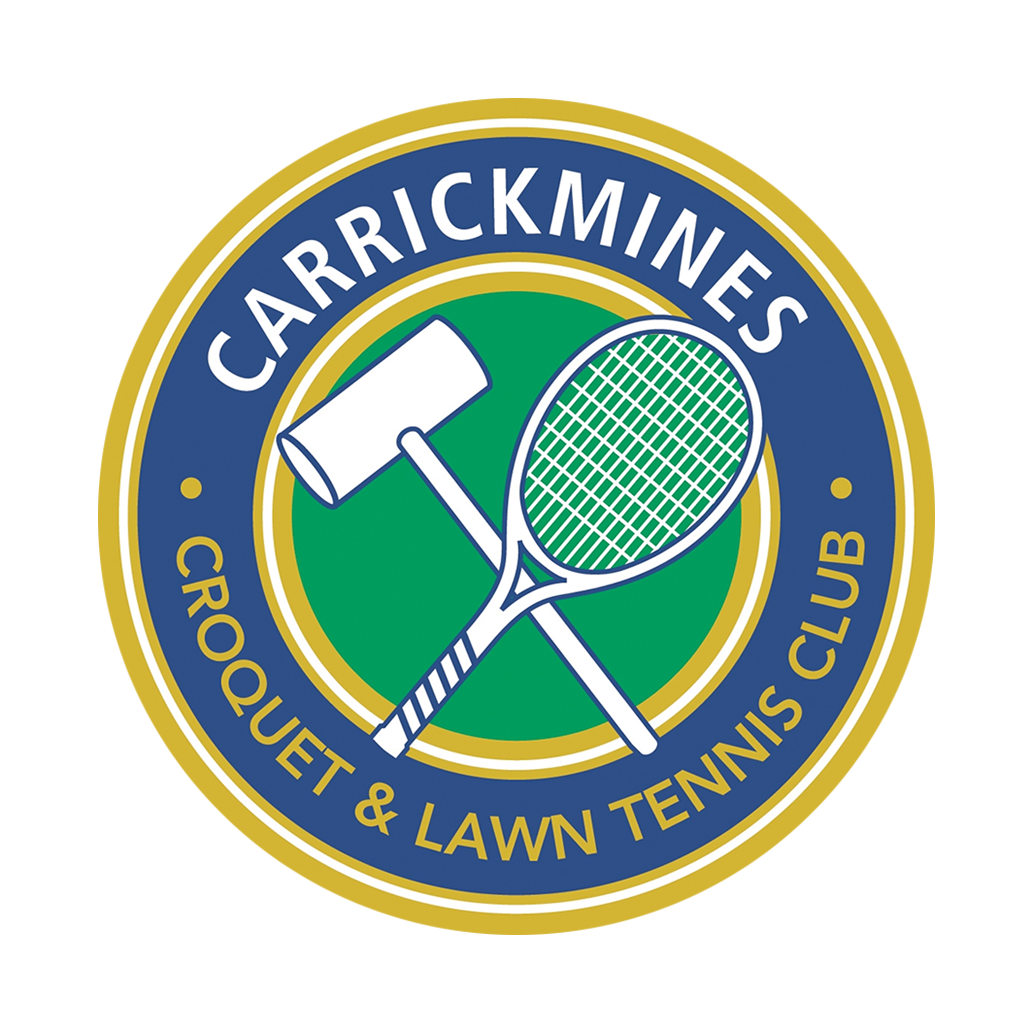County Dublin Championships
THE CHANGING OF THE GUARD
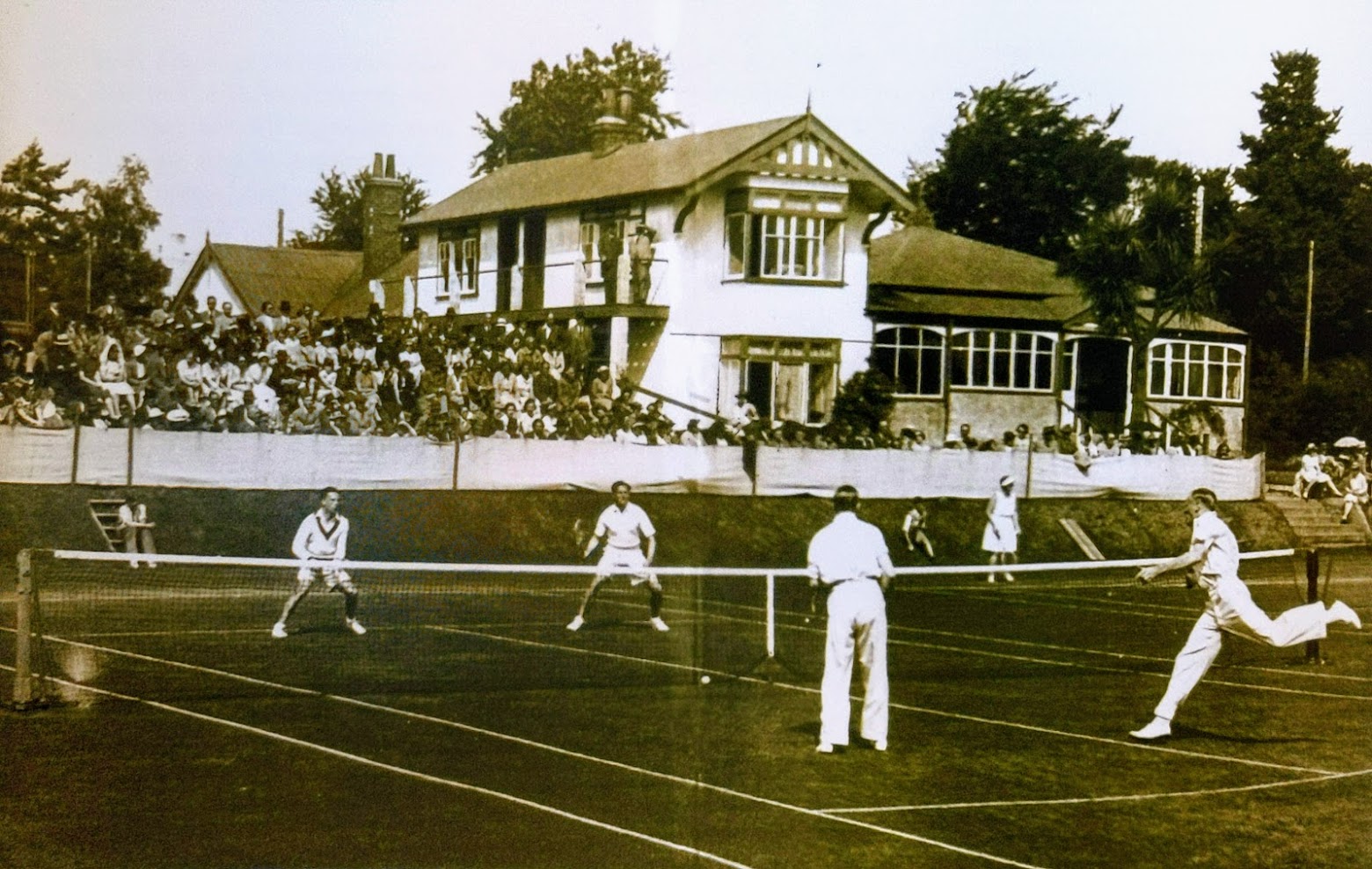
The tournament was suspended in the years 1915 – 1918 due to World War 1. Slowly life returned to normal after the war and the County Dublin Championships recommenced in 1919. The entries increased and large crowds attended. In the immediate post-war years, Elizabeth Ryan from the USA dominated the Ladies event winning five years in a row from 1919-1923. She won an incredible 26 Grand Slam titles including 19 Ladies Doubles & Mixed Doubles at Wimbledon. Her Wimbledon record was eventually surpassed by Billie Jean King and subsequently by Martina Navratilova. Ryan defeated Geraldine Beamish in the final in 1920 and Hilda Wallis in 1921.

Elizabeth Ryan (USA) in action in Carrickmines, Champion in 1919, ‘20, ‘21, ‘22 & ‘23.

Geraldine Beamish, Runnerup to Elizabeth Ryan in 1920. She lost to Ryan in the Wimbledon Doubles final three weeks earlier but managed to win the Singles title in the World Covered Court Championships later that year.
 Hilda Wallis, Champion 1925, 1926, 1928 & 1932. Her sister, Phyllis Wallis also won the Ladies Singles in 1933 & 1935.
Hilda Wallis, Champion 1925, 1926, 1928 & 1932. Her sister, Phyllis Wallis also won the Ladies Singles in 1933 & 1935.

Norma Stoker, Champion 1930 and Vera Mahony, Champion 1937
Vera Mahony (nee McWeeney) won the Ladies title in 1937. Vera would later become the popular Irish Times tennis columnist for many years.The Carrickmines quartet of Vera Mahony, Norma Stoker, Hilda & Phyllis Wallis, all won County Dublin Ladies Singles titles and played together on numerous DLTC Class 1 winning teams.
Formidable Grand Slam and County Dublin Champions in this period included British players Kathleen McKane and GB Davis Cup Captain, Colin Gregory and Eustace Fannin from South Africa. Kathleen McKane (‘Kitty Godfrey’) won her first Wimbledon singles title in 1924 and followed this up a few weeks later by winning in Carrickmines, defeating Hilda Wallis in the final. She won seven Grand Slam titles in all.
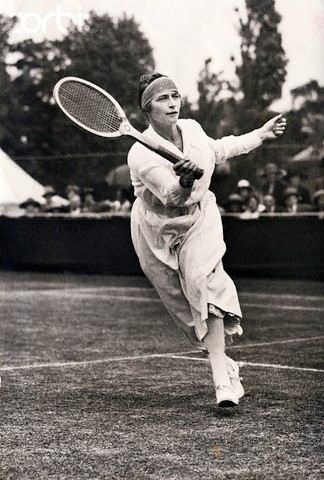 Kathleen McKane Godfrey County Dublin Champion 1924 and Wimbledon Champion 1924 & 1926
Kathleen McKane Godfrey County Dublin Champion 1924 and Wimbledon Champion 1924 & 1926
Colin Gregory was a two-time champion in Carrickmines and was the Australian Champion in 1929.
 Colin Gregory County Dublin Champion 1930 & 1933 and Australian Champion 1929
Colin Gregory County Dublin Champion 1930 & 1933 and Australian Champion 1929
The 1937 Champion was South African Eustace Fannin. After the war in 1947 he won the French Championships Doubles at Roland Garros with compatriot Eric Sturgess.
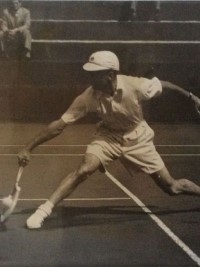 Eustace E. Fannin (RSA) County Dublin Champion 1937 and French Champion (Doubles) 1947
Eustace E. Fannin (RSA) County Dublin Champion 1937 and French Champion (Doubles) 1947
Irish Davis Cup player Edward McCrea was Men’s Champion in 1919 and 1920. He lived in Foxrock and played in Carrickmines along with Hilda Wallis. In the Paris Olympics 1924 they reached the Quarter-Final of the Mixed Doubles. He subsequently left Dublin to work as a surgeon in Manchester. While hosting a house party in Salford in 1940, McCrea’s house was hit by a German Luftwaffe parachute mine. His entire family and all the guests were killed outright in the attack.
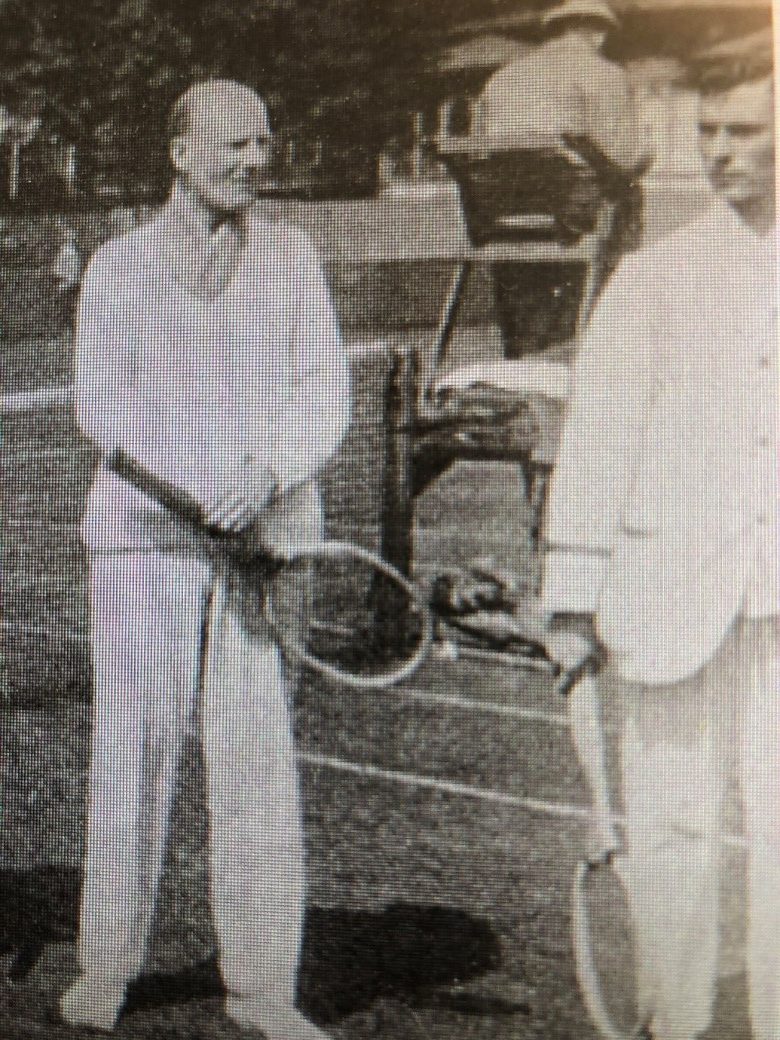
Carrickmines County Dublin Champions Simon Scroope (1909 & 1911) and on the right Edward McCrea (1919 & 1920).

John King Maconchy, President of Carrickmines 1951-1957
McCrea had defeated John King Maconchy in four sets in the 1919 final. Maconchy’s son, Michael, also played in the Championships and was killed in action in France in 1944. Later, John King Maconchy was President of Carrickmines C & LTC when the County Dublin Championships recommenced after World War 2 and its aftermath in 1951.
In 1923, Ireland played in the Davis Cup for the first time after independence. There was a strong contingent of Carrickmines and County Dublin Champions on the team including Simon Scroope, Edward McCrea and the Team Captain Jack Miley. Playing alongside them were Ben Haughton and Cecil Campbell of Fitzwilliam.
In the first home tie against India and after a dispute, it was decided not to fly the Tricolour that had replaced the Union Flag as the national emblem. Instead the flag of Fitzwilliam was displayed where the tie was played. The team Captain was Jack Miley who is the first recorded Club Champion in Carrickmines. He won the Men’s Handicap Singles in 1910 and again in 1911. The perpetual cup that he won was presented to Carrickmines by Ruth Durlacher, a Ladies Doubles Champion at Wimbledon and runner up in the ladies singles in the Co Dublin Championships.
Ireland defeated India before losing out to France in another home tie later in 1923. The French were to become one of the greatest Davis Cup teams ever!
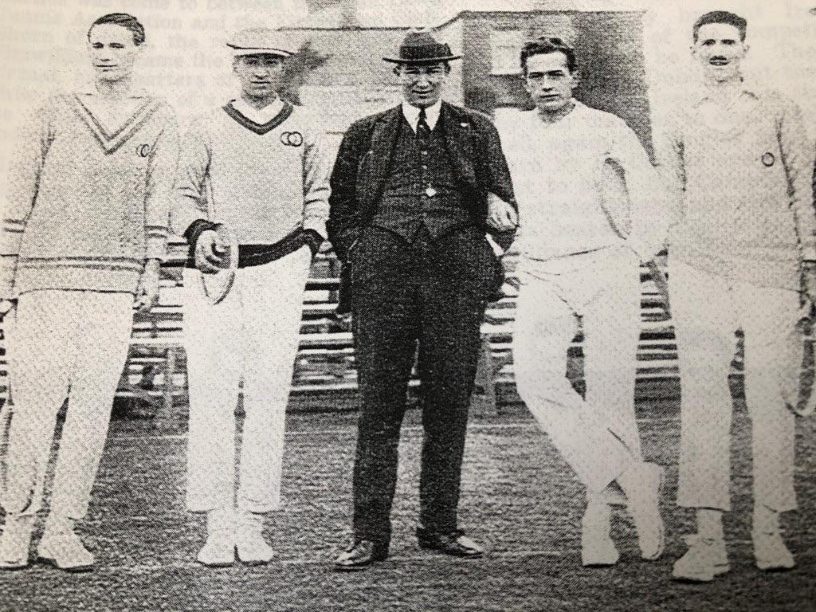 France Davis Cup team in Dublin 1923. L to R: Jean Borotra, Rene Lacoste, Allen Muhr (Captain), Henri Cochet, Jacques Brugnon, collectively known as the ‘The Four Musketeers’.
France Davis Cup team in Dublin 1923. L to R: Jean Borotra, Rene Lacoste, Allen Muhr (Captain), Henri Cochet, Jacques Brugnon, collectively known as the ‘The Four Musketeers’.
The Four Musketeers dominated world tennis in the second half of the 1920s and early 1930s, winning 20 Grand Slam singles titles and 23 Grand Slam doubles between them. They also led France to six successive Davis Cup wins, 1927–32. The Roland Garros stadium was built for the Davis Cup final in 1928. Rene Lacoste was known as “the crocodile” for his hustling game style. He set up his own clothing company after his tennis career and the iconic brand was held in the family until 2006.

Their Davis Cup team Captain, Allen Muhr was a rugby international and achieved legendary status as the first ever Frenchman to score in a test match against England in 1906. Muhr, who was Jewish, was arrested and deported by the Nazis to the Neuengamme Concentration Camp in Northern Germany. He was cruelly treated by them and died from starvation and septicaemia in 1944.

L to R: Cecil Campbell along with Simon Scroope and Edward McCrea of Carrickmines.
Although France won the tie 4/1, Cecil Campbell defeated Jean Borotra. The following year the Frenchman went on to win the Men’s Singles title at Wimbledon. Cecil Campbell was the outstanding Irish player of his time. He reached the Quarter finals of Wimbledon three times in a row. In 1925 he married English tennis player, Lavender Letts. She won the County Dublin Ladies Championship Singles title in 1929. However, their marriage was short-lived and she successfully sued for Divorce on grounds of adultery. Campbell was knighted for his service in the Second World War. Shortly after, in 1952, he was found dead of a gunshot wound by his own hand at his home in Cairo, Egypt. He was suffering from “indifferent health” according to The Times.
The Irish team has played in the Davis Cup ever since with mixed fortunes. The highlight was reaching the World Group stage in 1983.
James Cecil Parke is the only Irishman to win the Davis Cup. He played the leading role representing the “British Isles” in 1912, pre-independence. The same year he won the Australian Championships. Parke was an outstanding sportsman! He was also the Irish Rugby Captain and won the Irish Championship Doubles four times, partnering J.F. Stokes.
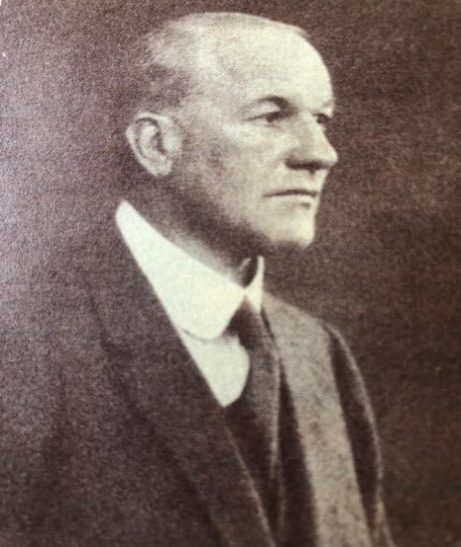
J.F. Stokes, the County Dublin Championships Tournament Referee (1908-1914).
J.F. Stokes married Eva Jane Wilson, the daughter of William Wilson and the original Club owner and founder. Their son, John Stokes was also Tournament Referee and he was the last Club owner (1951-59), before the Club was sold to the members.

George (Trevor) McVeagh won the Men’s Singles in 1934 &1935. The final of 1936 was abandoned due to rain. It was agreed that McVeagh should keep the Cup and present a new one. This was the tradition at the time when an event was won three times in succession. Harry Cronin was a finalist in 1935, losing to McVeagh. Harry was the father of Colin Cronin, the popular Carrickmines Men’s Captain in the late 1990s.
Raymund Egan of Lansdowne and Carrickmines had two successes in 1938 & 1939. He declined an invitation to join Fitzwilliam LTC in protest that his father was refused membership, despite being President of the Irish Lawn Tennis Association several years earlier. This was because he wasn’t in a “Profession”. Ironically, Raymund’s son Frank was later to become President of Fitzwilliam in 2013.
 L to R: County Dublin champions Raymund Egan 1938 & 1939 (partly hidden) with King Gustav 5th of Sweden, George McVeagh 1932, 1934 & 1935 and Cyril Kemp 1941 at the Sweden v Ireland Davis Cup tie in 1946.
L to R: County Dublin champions Raymund Egan 1938 & 1939 (partly hidden) with King Gustav 5th of Sweden, George McVeagh 1932, 1934 & 1935 and Cyril Kemp 1941 at the Sweden v Ireland Davis Cup tie in 1946.
